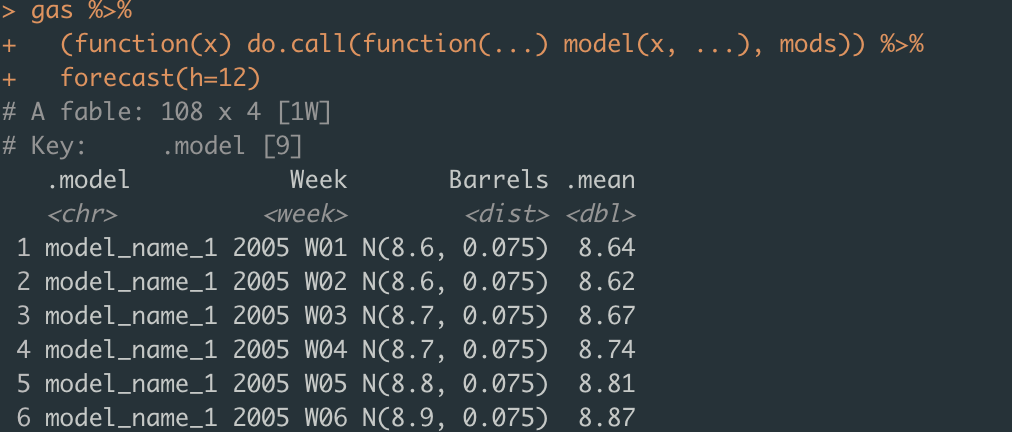Hey @juan-g-p!
The following code works,
library(fpp3)
gas <- us_gasoline %>% filter(year(Week) <= 2004)
mods <- list()
for (i in seq(1, 9)) {
mods[[paste0("model_name_", as.character(i))]] <- TSLM(Barrels ~ trend() + fourier(K = i))
}
my_model <- function(...){
model(gas, ...)
}
do.call(my_model, mods)The output is,



I am currently in a scenario where I need to fit multiple models where I just change one of the parameters.
I would like to have a loop from 1 to n and create a model definition for each of the values of K that I would then feed to the function model. I would like to store the model definitions in a dictionary (list) where I would have separately the model name and the model itself.
Thus far I have been able to create single model formuas and feed them to the function model in a successful manner:
My goal would be to have a set of model definitions created in a loop and stored in a list, which I would then feed to the function model as arguments
In python I would use list unpacking or dict unpacking to achieve this, but I fail to attain this in R. People suggest using do.call() but I fail to do this...
Could anybody please help?